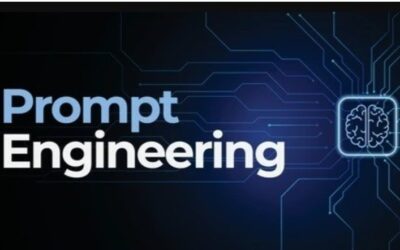Published by TechToGeek.com
Table of Contents
🚀 Introduction
Artificial Intelligence is moving from simple linear prompts to complex agentic workflows, where multiple intelligent components collaborate, reason, and take actions. At the center of this new frontier stands the LangGraph agent framework, a powerful open-source graph-based system that enables developers to design scalable, modular, and stateful AI agents.
Unlike traditional LLM pipelines where data flows sequentially, the LangGraph agent framework allows you to connect “nodes” of intelligence into a graph—giving your AI full flexibility, memory, human feedback integration, and multi-step reasoning. This evolution is what makes LangGraph one of the most important technologies for developers building robust, agent-based AI applications.
In this comprehensive guide, we will explore:
- How the LangGraph agent framework works
- LangGraph vs LangChain comparisons
- LangGraph Python library guide
- How to build multi-agent systems with LangGraph
- How LangGraph supports human-in-the-loop workflows
- LangGraph deployment with LangSmith
- A complete, real-world AI Travel Planner project built using LangGraph
- Four premium books every serious AI developer should read
Let’s dive into the future of agentic systems.
🔍 What Is the LangGraph Agent Framework?
The LangGraph agent framework is an open-source graph-based system for building agent applications using Python. It allows developers to define each step of the reasoning process as a node, and connect these nodes using a directed graph. Each node can represent:
- Reasoning step
- Tool call
- Memory check
- External API call
- Human feedback validation
- Multi-agent coordination
This design makes the LangGraph agent framework extremely powerful for complex workflows like:
- Autonomous trading bots
- Conversational agents
- Decision-making pipelines
- Multi-agent simulations
- Research assistants
- Retrieval-augmented generation (RAG)
- AI planning and task decomposition
The core advantage is that LangGraph lets you structure intelligence—not as a prompt—but as a connected ecosystem.
⚔️ LangGraph vs LangChain
One of the hottest discussions in the AI world today is LangGraph vs LangChain. Both are created by the same ecosystem, but they serve different purposes.
➤ LangChain
- Focuses on tools, chains, prompts, agents
- Ideal for quick prototyping
- Provides high-level abstractions
- Great for simple tasks
➤ LangGraph
- Stage for real-world, production-grade systems
- Focuses on stateful agents
- Gives full control over flow
- Supports recovery, retries, check-pointing
- Designed for multi-agent frameworks
- Works exceptionally well with LangSmith for monitoring
👉 Summary
Use LangChain to prototype.
Use LangGraph agent framework to build systems.
🧪 LangGraph Python Library Guide
To start using the LangGraph agent framework, install it via:
pip install langgraph
A simple LangGraph graph looks like:
from langgraph.graph import StateGraph, END
def start(state):
state["message"] = "Planning your trip..."
return "planner"
def planner(state):
state["plan"] = "Your 3-day itinerary is ready!"
return END
graph = StateGraph()
graph.add_node("start", start)
graph.add_node("planner", planner)
graph.set_entry_point("start")
app = graph.compile()
print(app.invoke({"destination": "Goa"}))
Even this tiny example shows the heart of the LangGraph agent framework—nodes, transitions, state, and intelligent flow.
👥 How to Build Multi-Agent Systems With LangGraph
A major strength of the LangGraph agent framework is building multi-agent systems, where each agent handles a specific task:
For example:
- Planner Agent → Decides itinerary
- Budget Agent → Ensures cost efficiency
- Weather Agent → Checks forecast
- Recommendation Agent → Suggests hotels or activities
LangGraph connects these agents through a graph. Each agent becomes a node, and the connections represent decisions.
🧑⚖️ LangGraph Human-in-the-Loop Workflows
Human-in-the-loop (HITL) is essential when:
- AI makes high-stakes decisions
- Human approval is required (travel bookings, payments, itinerary changes)
- AI agents need supervision
The LangGraph agent framework supports this naturally.
Example:
def approval_node(state):
return {"human_required": True, "plan": state["plan"]}
Where the system pauses until a human approves the AI’s output.
This makes the LangGraph agent framework ideal for enterprise workflows.
🚀 LangGraph Deployment With LangSmith
LangSmith is the official monitoring, evaluation, and debugging platform for LangChain and LangGraph.
Using LangSmith with the LangGraph agent framework, you can:
- Track every node execution
- Measure performance
- Visualize state transitions
- Debug tool failures
- Monitor real-time agent behavior
For production-level AI apps, this is priceless.
🌍 AI Travel Planner – Built Using LangGraph Agent Framework
Now let’s build a complete real-world project using the LangGraph agent framework: an AI-powered Travel Planner.
This AI system plans a 3-day vacation anywhere in the world using:
- Multi-agent architecture
- Weather intelligence
- Budget optimization
- Human approval nodes
- Real-time recommendations
🧩 Project Architecture
Agents (Nodes):
- Destination Parser Agent
Extracts location, dates, and travel group details. - Weather Agent
Fetches weather data from APIs. - Itinerary Agent
Creates a 3-day plan: sightseeing, food, travel mode. - Budget Agent
Adjusts the plan to fit user budget. - Hotel Recommendation Agent
Suggests hotels based on user preferences. - Human Approval Agent
Lets user approve or modify the itinerary. - Final Output Agent
Produces polished travel plan.
🧠 Flow of the Graph
User Input
↓
Destination Parser
↓
Weather Agent
↓
Itinerary Agent
↓
Budget Agent
↓
Hotel Agent
↓
Human-in-the-Loop Approval
↓
Final Result
This structure shows the beauty of the LangGraph agent framework—flow, memory, and interaction.
🧪 Code Example (Simplified)
from langgraph.graph import StateGraph, END
def parse_destination(state):
state["destination"] = state["input"]["destination"]
return "weather"
def weather(state):
state["weather"] = "Sunny 28°C" # API call simulation
return "itinerary"
def itinerary(state):
state["plan"] = f"3-day plan for {state['destination']} with {state['weather']}"
return "budget"
def budget(state):
state["budget_plan"] = "Adjusted to 25,000 INR"
return "approval"
def approval(state):
state["human_required"] = True
return "finish"
def finish(state):
return END
graph = StateGraph()
graph.add_node("parse", parse_destination)
graph.add_node("weather", weather)
graph.add_node("itinerary", itinerary)
graph.add_node("budget", budget)
graph.add_node("approval", approval)
graph.add_node("finish", finish)
graph.set_entry_point("parse")
app = graph.compile()
print(app.invoke({"destination": "Bali"}))
This project is an excellent example of why developers love the LangGraph agent framework.
📚 Top Expert-Level Books That Align With the LangGraph Agent Framework
📘 1. LangGraph – managing AI Agents: A Beginner’s Guide(Daniel Nastase)
A foundational, university-level LangGraph textbook.
Mini Review:
Deep, authoritative, and essential for understanding LangGraph from fundamentals to expert topics.
📗 2. Deep Learning (Ian Goodfellow, Yoshua Bengio, Aaron Courville)
The gold standard for deep learning.
Mini Review:
A technically rigorous masterpiece that every AI engineer should read at least once.
📙 3. Designing Data-Intensive Applications (Martin Kleppmann)
Perfect for developers building production-grade AI architectures.
Mini Review:
Clear, elegant, and incredibly deep—explains databases, distributed systems, and scalability like no other book.
📕 4. Learning LangChain: Building AI and LLM Applications with LangChain and LangGraph(Mayo Oshin & Nuno Campos)
A premium book used by beginners.
Mini Review:
This book is a hands-on, production-oriented guide for developers who want to build agentic AI applications using LangChain and its graph-based extension, LangGraph.
🏁 Conclusion
The LangGraph agent framework is transforming how developers design multi-step AI workflows.
With graph-based state management, multi-agent support, human-in-the-loop approvals, and seamless LangSmith deployment, LangGraph is becoming the backbone of next-gen AI systems.
From travel planners to enterprise automation, LangGraph offers a powerful foundation for building intelligent, reactive, and scalable agents.
Whether you are comparing LangGraph vs LangChain, exploring human-in-the-loop workflows, or using this LangGraph Python library guide to build your first project… one thing is clear:
👉 The LangGraph agent framework is the future of agentic AI.







